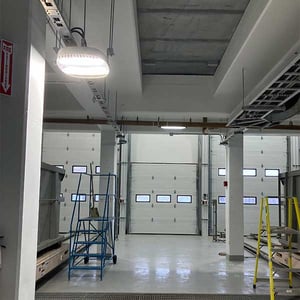Industrial LED lighting technology has experienced significant innovation. The traditional notions of lighting have remained unchanged for decades.
Facilities are expanding project scope from energy efficiency to workplace safety
The field of industrial LED lighting technology has experienced significant innovation. The challenge is the traditional notions of lighting have remained unchanged for decades. The early focus of LEDs was primarily on energy efficiency and long lifespan.
The proven success of this technology has shifted attention. We are now exploring the full potential of LEDs. Nemalux enhances the value of lighting applications in various industries. In particular, the impact of lighting quality on worker safety has become a topic of interest.
Data on occupational injuries reveal that work-injury rates are high in industrial facilities. Injury rates are higher among employees who are 45 years or older. The highest rate is in those aged over 65 years old. This age group often experiences significant changes in visual acuity, affecting task performance.
Minimizing hazardous location injuries
Improving lighting quality in industrial facilities impacts reducing the risk of injuries. Lighting quality improvements can lead to enhanced target detection. Reducing reaction time, improving visual performance, and color discrimination.

As a result, workers feel less fatigue induced by lighting. There is a direct connection between poor lighting quality and occupational hazards. Environmental stress factors often link these correlations.
Currently, many industries buy luminaires based on luminous flux. They overlook light's value propositions, such as the impact on safety and productivity. Facility planners can improve the metrics used to compare conventional and LED lighting.
Lighting enhances occupational safety within industrial areas
In conclusion, lighting impacts occupational safety in industrial environments. Productivity and human performance in the workplace remain center stage. It is crucial to consider the role of lighting in improving safety.
Considering lighting quality attributes besides traditional metrics, industries can mitigate certain risks. Reducing the potential occurrence of human errors and occupational injuries.


